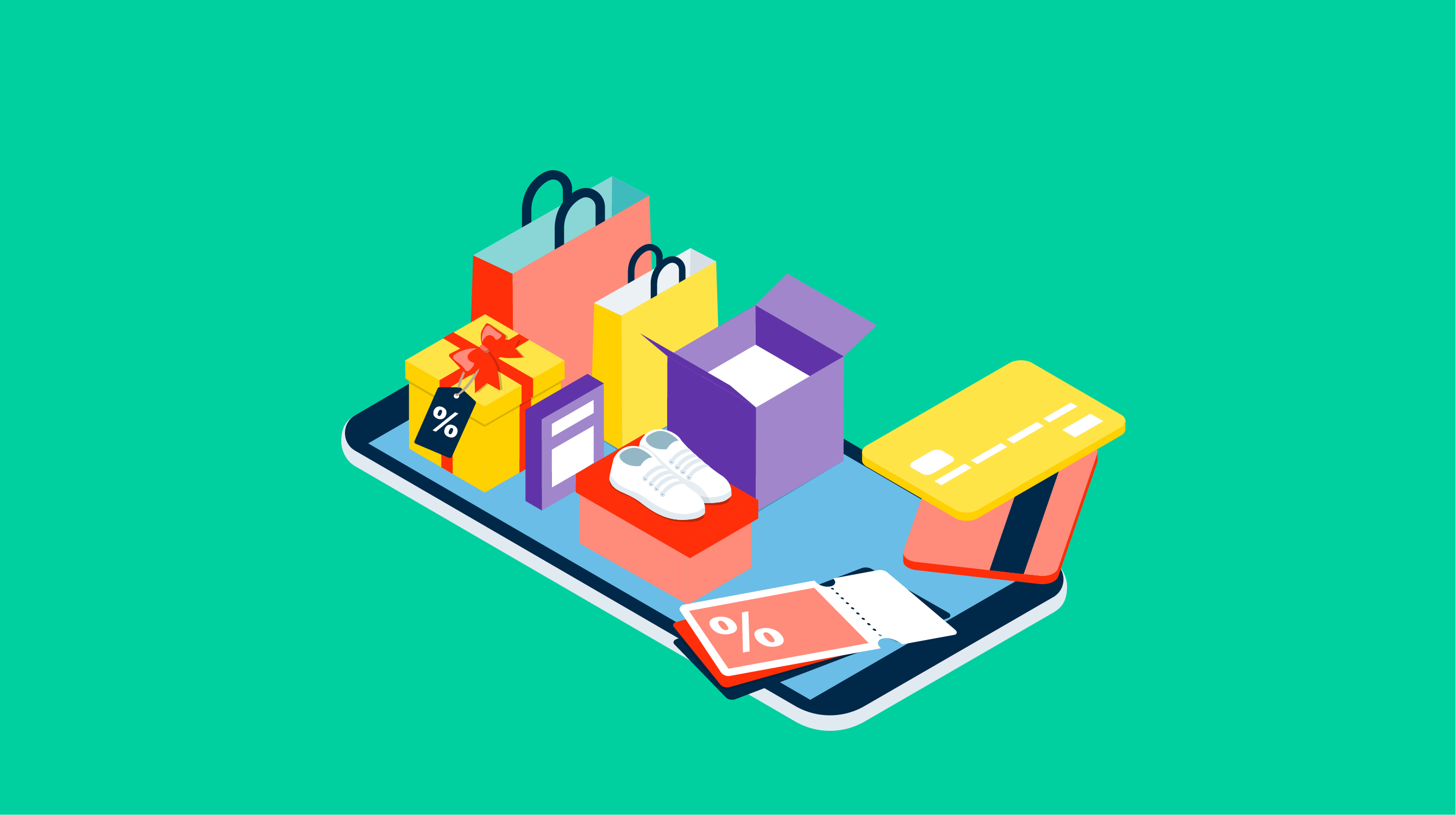

Are you looking to start an e-commerce business? The time couldn’t be better.
Global e-commerce sales are expected to surpass $5.5 trillion in 2022 and reach $7.385 trillion by 2025. But while the market is clearly there, you may still be reluctant to launch your e-commerce business, especially if you have no web development and design experience.
The good news is you don't need an extensive background in web development and online store management to start an e-commerce business. Once you know the basics, including the options to build an online store, how to find reliable developers, the best e-commerce platforms, and how to customize your store, you can easily boost your online business.
That's exactly what we'll cover: the key steps to creating an e-commerce website. But before we get into the technicalities, here's why you should pursue this business idea in the first place.
With most business happening online, setting up your online storefront is imperative. Here are some reasons why many businesses choose to build e-commerce websites.
One great thing about building an e-commerce website is that it doesn't cost that much. Over the years, hosting and e-commerce solutions prices have decreased significantly, allowing you to get your online store up and running without breaking the bank.
Building an online store is not as intense as starting some other businesses. In fact, once you learn the basics, an online store can be a great side hustle. It’s also time-efficient. For example, adding new products, adjusting prices, or uploading new product images only takes a few minutes.
The latest trends in e-commerce show that the number of consumers who prefer online shops to their brick-and-mortar counterparts continues to grow. According to statistics, in 2022, e-commerce sales grew by 27%, while brick-and-mortar ones showed only 8% growth. E-commerce sales were close to $5 trillion in 2021; by 2040, over 90% of recorded purchases will be made online. Bottom line, the market is there, and consumers are changing their buying behavior in your favor.
One of the most appealing things about running an e-commerce website is the variety of products you can sell.
With different products to sell, you can quickly adapt to changes in your target market and become relevant to your target customers simply by introducing new popular products or product categories.
You can start your online store in two ways.
Building a site from scratch means you have to go through many steps, from designing the online store to building all the elements and putting them together into a working website. If you’re not familiar with HTML, CSS, and JavaScript and don’t have much free time, you need to hire developers.
If you decide to build a website from scratch, you need to work with e-commerce developers. Developers create custom site elements and code functions like automating e-commerce processes.
But how do you find the best developers for your needs? Here are some tips to help you find reliable developers for your project.
Pros of building a site from scratch
Cons of building a site from scratch
The other option is to use a platform to streamline the e-commerce website building process. Whether you choose an e-commerce platform or website builder, you can use pre-built website elements to assemble and launch your online store quickly.
It's usually an easier way than building from scratch. How do you know which is the best option for you? Website builders and developers have one thing in common – there are many!
Then how do you choose a website builder for your project? Here are some pros and cons to consider.
Pros of using a website builder
Cons of using a website builder
Setting up an e-commerce site is pretty easy with the right tools and knowledge. Here are 4 simple ways to build one for your business
You need to host your e-commerce website and choose a domain name to go live. Let's see why these two steps are essential to your business success and how to do them correctly.
Web hosting provides the storage space for the files that make up your website and allows users to access them online. If you use a website builder, you don't have to worry about hosting as these platforms have their hosting solutions and handle everything from maintenance to website security. However, if you decide to work with a developer, you must find and buy a hosting plan.
Web hosting service matters for several reasons:
Website hosting service providers offer a range of features, and knowing how to choose the right one for your business can ensure consistent loading speeds and uptime.
A domain name is your online store’s web address, but it's much more. It's the first thing your potential customers see when they interact with your online brand. Customers quickly remember a memorable domain name. Plus, it’s the focus of all your branding and marketing strategies.
Finding a good domain name can be a challenge. The following tips can help streamline the process:
Some examples of great e-commerce domain names are InspireUplift, Overstock, and Humble Bundle. Now that you know all the basics and the initial preparations required, you're ready for the next step, customizing your store.
Customize your online store to create a unique look, provide a great customer experience, and make shopping easier for your customers. Here are the most relevant areas to customize.
Easy navigation is critical to your success as it helps site visitors easily find what they need. Some best practices include highlighting parent product categories, introducing subcategories, and adding a search bar as Waterstones did on their website.
Source: Waterstones
The three pillars for creating your shopping cart checkout pages are clear, simple, and fast. For example, you can introduce a detailed product summary, provide only essential information, add trust marks, and provide information about available support like Best Buy does in its store.
Source: Ecommercebooth
When it comes to user experience, online shoppers prefer a clean design to a cluttered one. They don't want to jump through hoops to find what they need. Otherwise, they'll jump off and look elsewhere. Use white space to highlight important sections of the page and user-friendly color schemes that Allbirds makes perfect on their website.
Source: Allbirds
While you can customize text and images in your online store, remember that people are there to shop or research products. Offer only relevant information and keep it clean. Don't use unnecessary background images to distract visitors' attention from the products as Chubbies does.
Source: Chubbies
Offer only relevant information and keep it clean. Don’t use unnecessary background images to risk diverting visitors' attention from products. For example, Chubbies follows the best industry practices on this.
Your website should contain relevant information on all pages. Your terms and conditions, return policy, shipping practices, and essential documents should be available through the website footer.
You can easily add branding to your online store by customizing color codes. You can customize many professionally designed themes to reflect your brand colors and logo. For example, TOMS does a great job balancing its tagline with the color scheme and smart product choices.
Source: TOMS
Adding products to your online store is a crucial step. When you add them, you provide all the information to include on a product page. Adding products through e-commerce platforms and website builders is straightforward as they all have an "Add New Product" button that triggers a wizard to guide you through the process.
Here are some essential steps to follow when adding products to your online store.
By supporting multiple payment options, you can make shopping in your store more convenient for a broader demographic. The easiest way to manage them properly is to use the plugins. These plugins support a dozen payment methods you can add to your store with just a few clicks.
The most popular payment methods include:
Shipping is one of the most critical aspects of your e-commerce business. It adds to the customer experience and can help you attract more customers and improve customer satisfaction rates.
The following e-commerce shipping best practices can help you create a seamless shopping experience:
Building an e-commerce site and starting an online store is challenging for absolute beginners. Hopefully, the tips in this article will help you streamline your efforts and make informed decisions. Building your store is the first step in making your online brand successful.
Once your site is online, don’t forget to create an ongoing marketing strategy. You have different options, including SEO, paid ads, social media, and blogging.
Content marketing can help you reach potential customers, increase website traffic, generate leads, and get more sales. Learn more about the basics of content marketing and set up a strategy for your business.

Manage all your e-commerce operations from a central location with e-commerce software.
Robert's passion for building handy web tools led him to establishing ToolTester, a platform that helps people find reviews and tutorials for the world's leading website builders, e-commerce platforms, and web hosting services.

Manage all your e-commerce operations from a central location with e-commerce software.
E-commerce marketing helps your business grow, increases sales, and builds brand awareness.
 by Piyush Shah
by Piyush Shah
Growth in the e-commerce space has provided customers with more convenience and purchasing...
 by Mohan Natarajan
by Mohan Natarajan
E-commerce marketing helps your business grow, increases sales, and builds brand awareness.
 by Piyush Shah
by Piyush Shah
Never miss a post.
Subscribe to keep your fingers on the tech pulse.




